GoWin 1U 25GbE Appliance Internal Hardware Overview
Here is a look at the system’s internals.
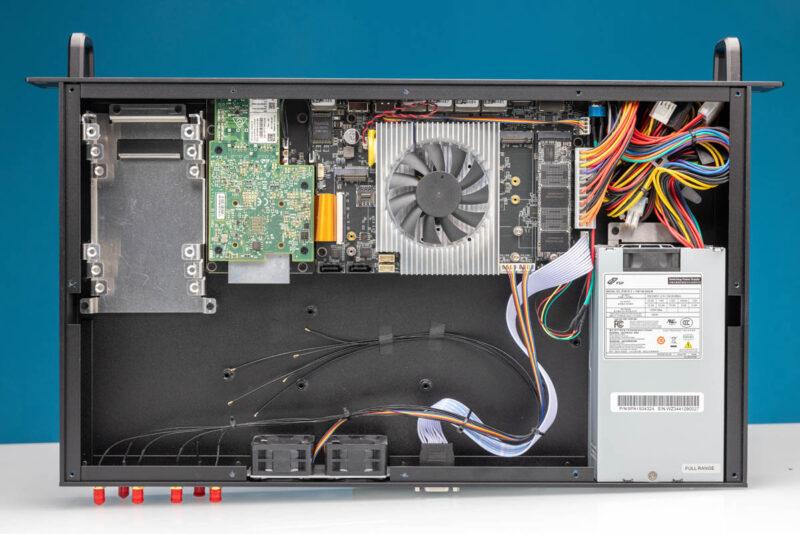
We are going to start our journey just next to the ATX power connector on the motherboard and the nest of cables hidden behind the chassis logo.
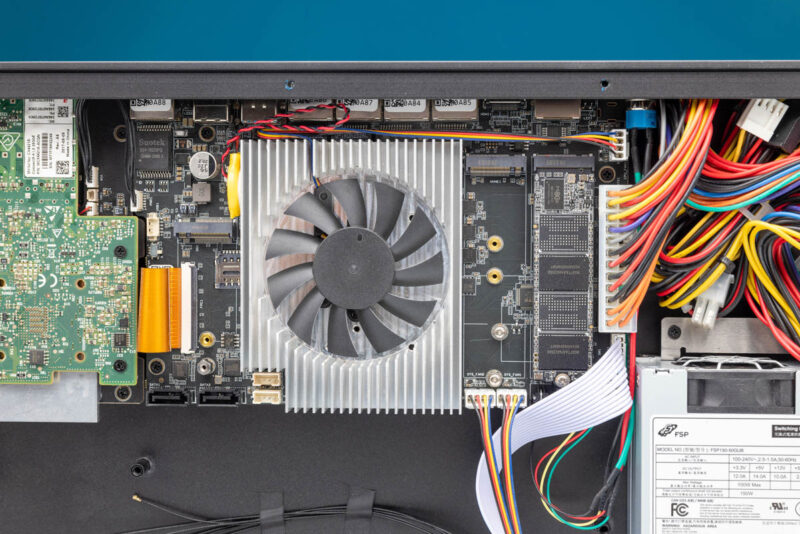
Here we have our two M.2 NVMe slots, as well as various fan connectors and I/O.
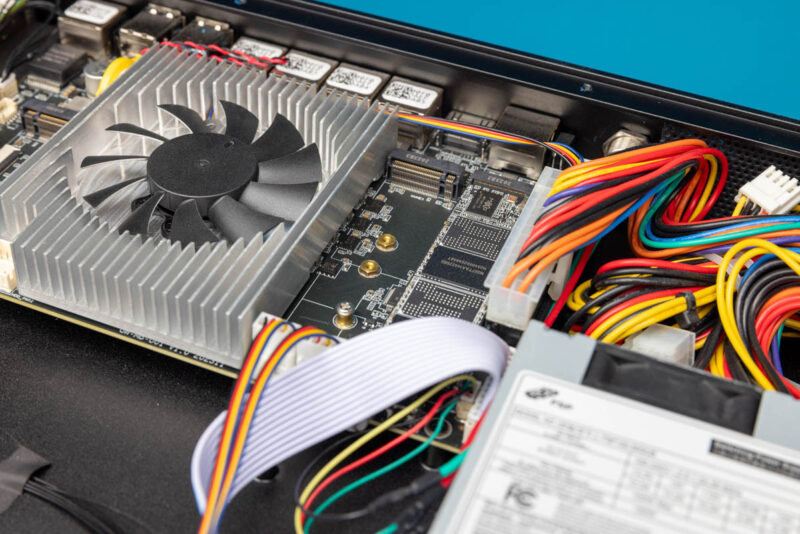
Here is a look from the other angle.
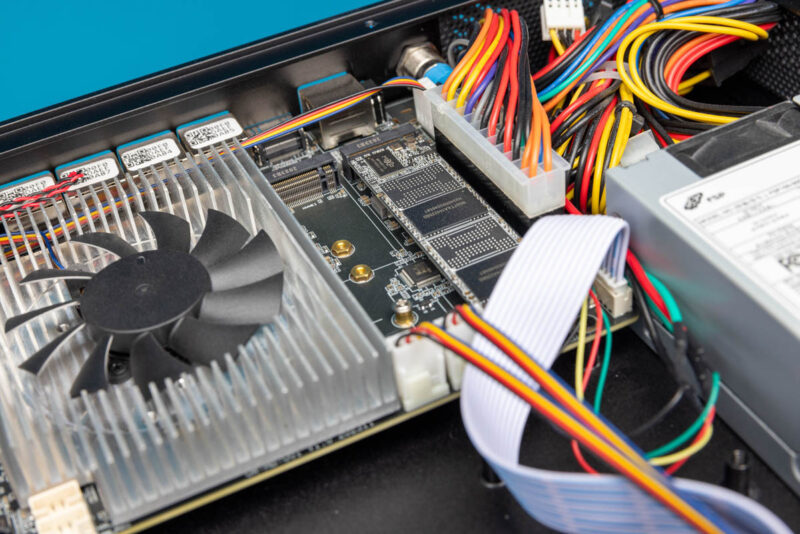
The SSD we have is a GoWin branded PCIe Gen3 512GB unit.
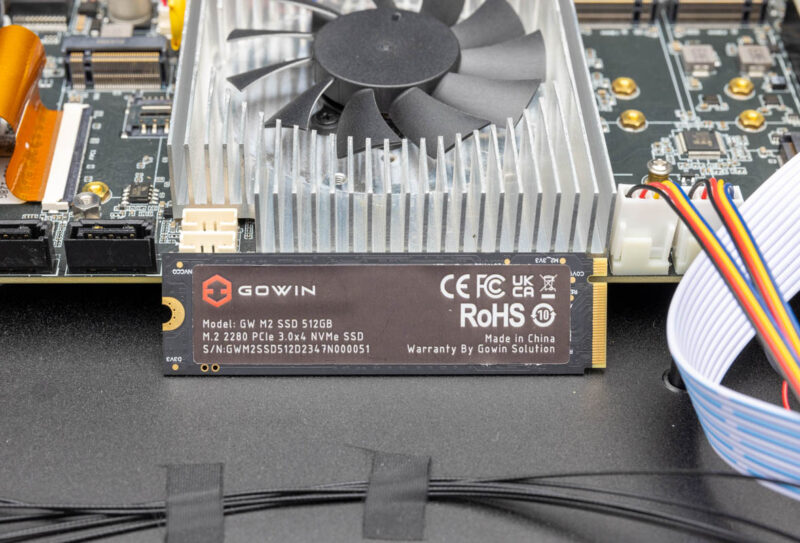
We can see that it uses a Maxio controller that Will has seen a number of times in his SSD reviews for STH.
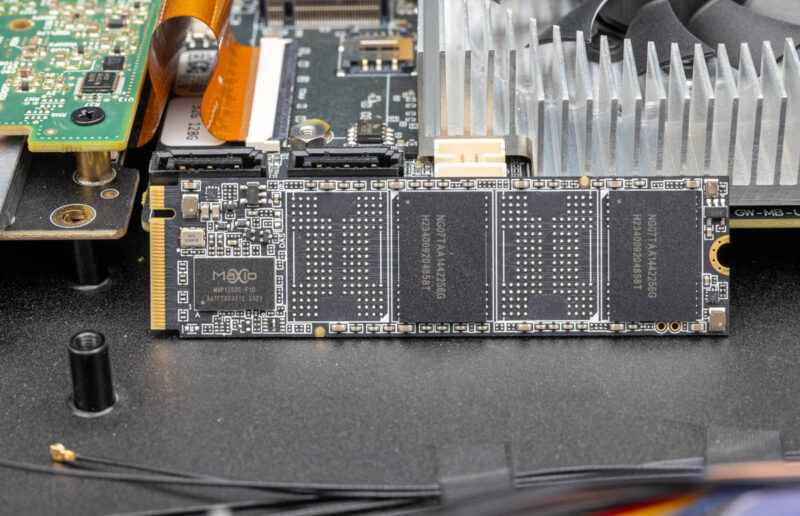
Underneath this though, we get a WiFi slot. We also get a power button as it seems this motherboard was made to also work in a desktop chassis more akin to others we have reviewed previously.
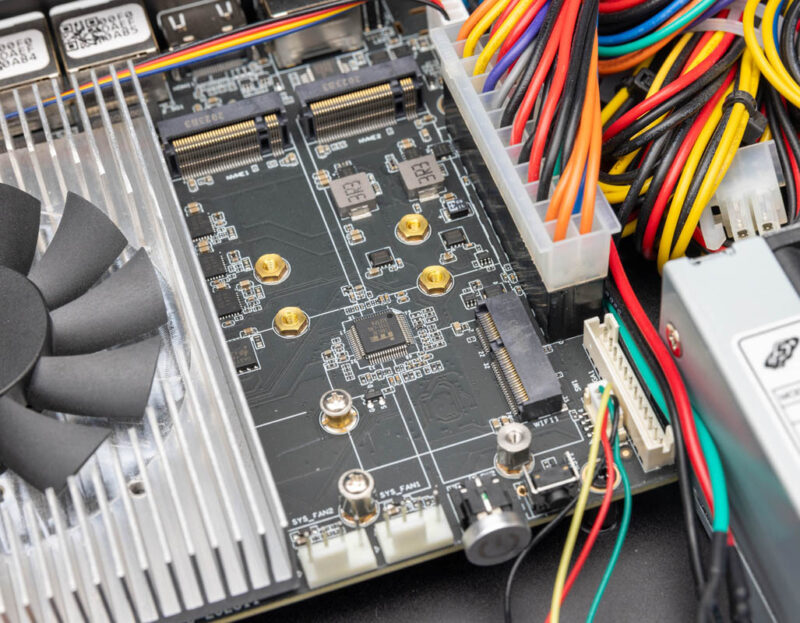
Here is a look at the cables out of that area and a top-down view of the motherboard.
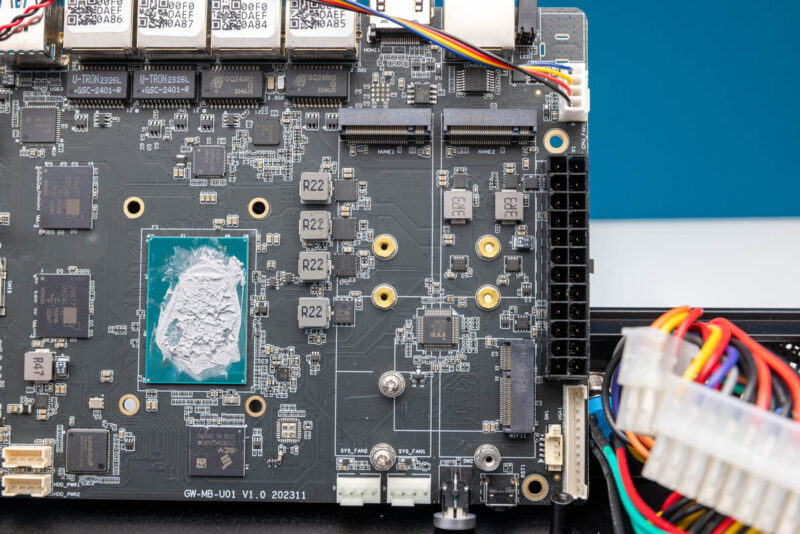
Pulling the heatsink and fan off, we have a lot of thermal paste but it is making contact with the low-power CPU.
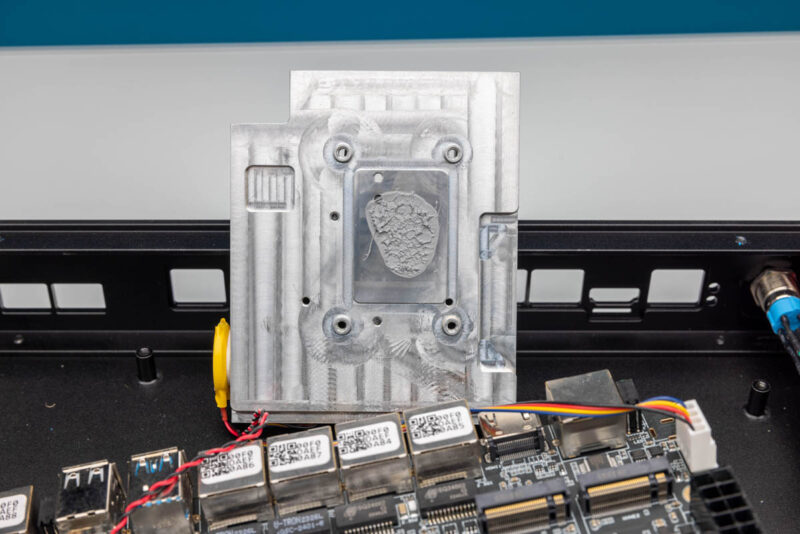
Here is the Intel Core i3-N305 without the heatsink and the motherboard without most of its cables.
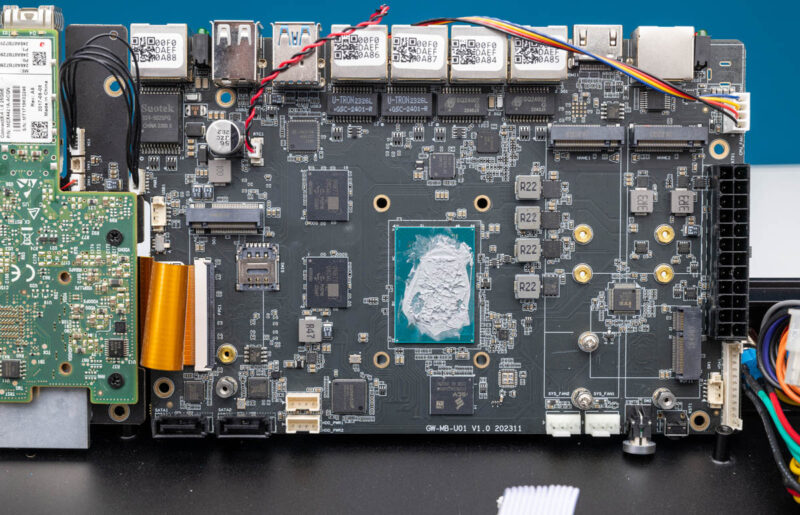
With this unit, the memory is fixed. We get 32GB which is more than the official CPU spec of 16GB, but these CPUs have been known to work with 32GB. We also got some interesting Micron memory modules with the Micron logo covered by a box. This memory is fixed to the motherboard, so it needs to be ordered in the required capacity.
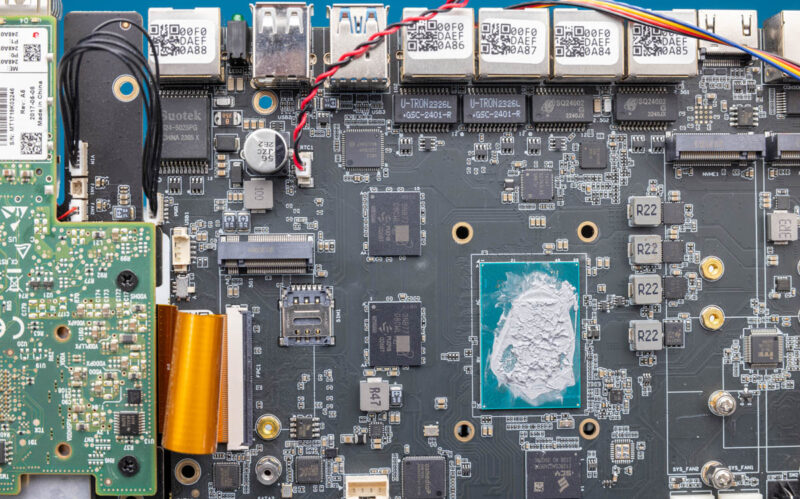
We also get 128GB of eMMC memory by SCY (Shenzhen Shichuangyi Electronics Co., Ltd) onboard. Some OSes can use this as boot media and having the NVMe SSD also allows for a higher endurance drive to be used for logging and data.
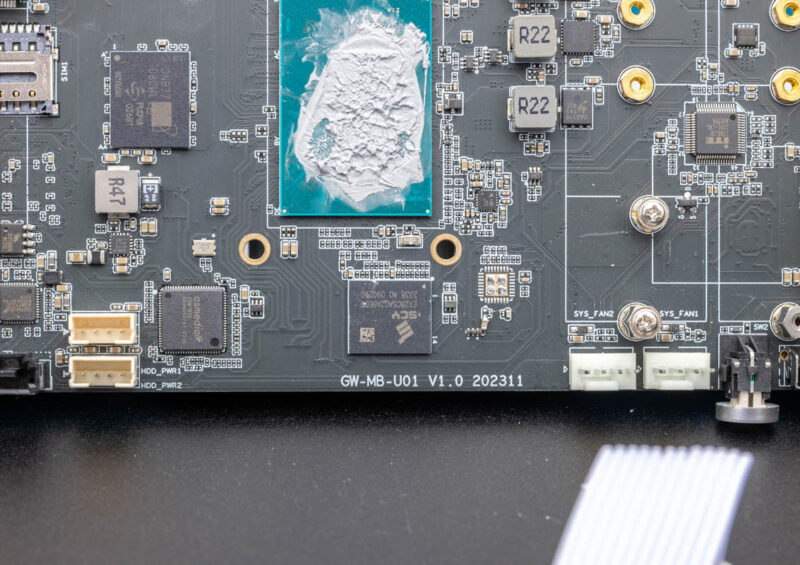
Next to this area is the WWAN card slot for those that would want to add a 4G/5G modem.
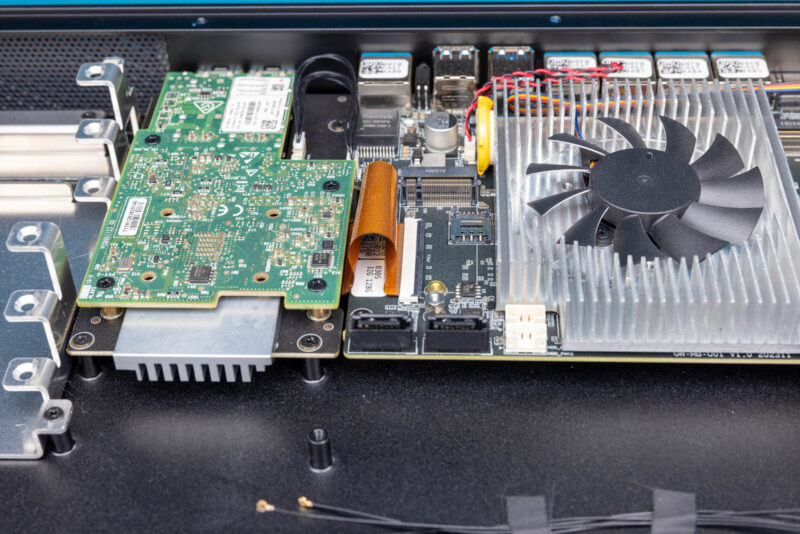
There is also a nano SIM card slot for this feature on the motherboard.
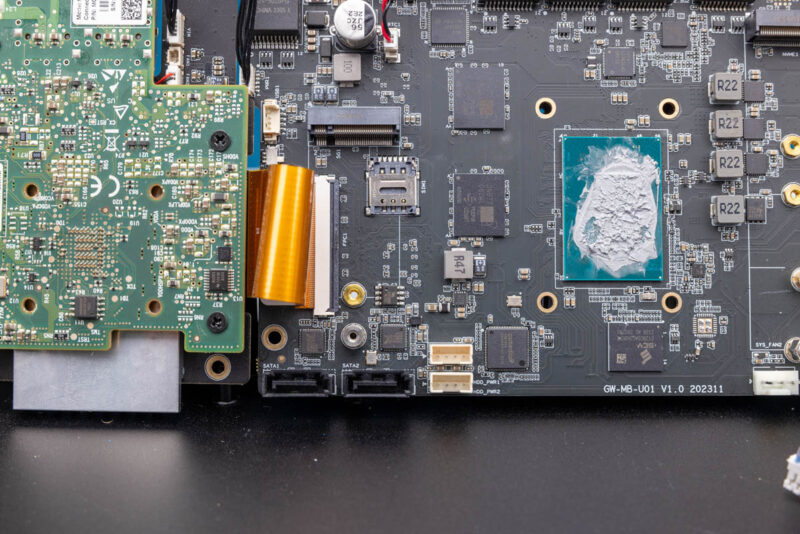
You will see on this motherboard a number of ASMedia switches like the ASM1806 to help bridge lower-performance I/O onto the limited PCIe lanes of the platform. What is more interesting is that there is also an ASMedia ASM1153E solution to handle USB 3 to SATA hard drive. Using this method, GoWin is able to add SATA to this platform.
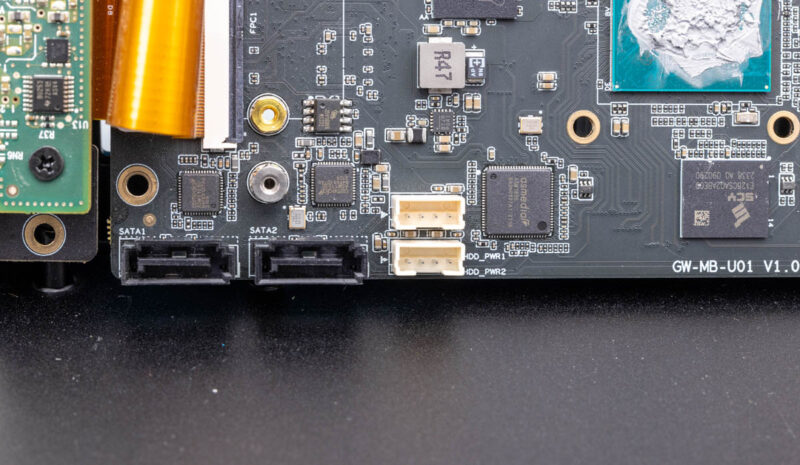
There are two SATA ports onboard.
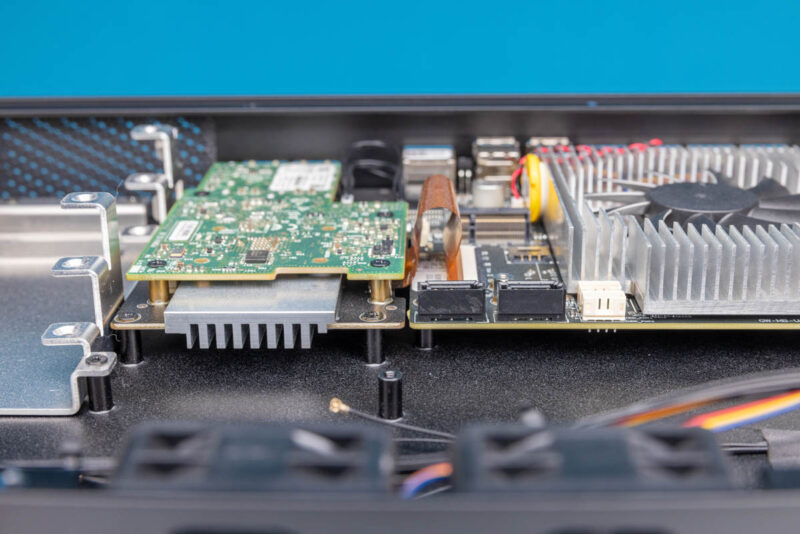
These two SATA ports are for 2.5″ drives installed on the far side of the chassis.
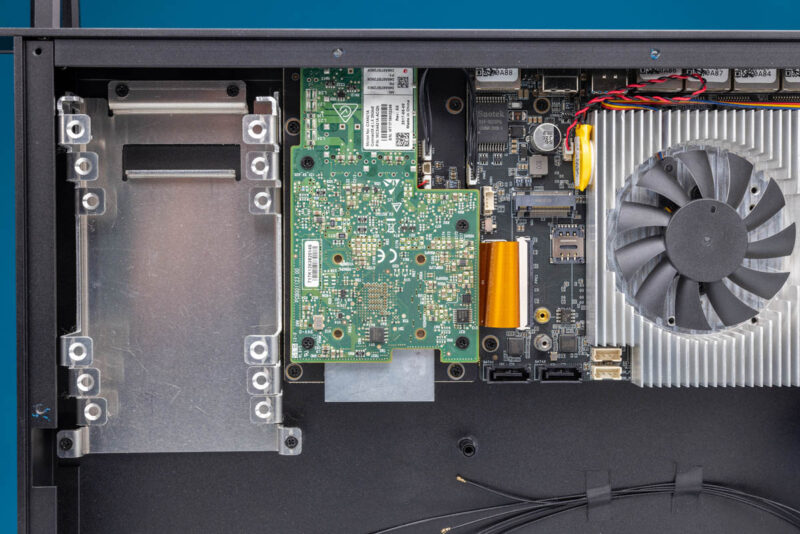
The system comes with SATA data and power cables to make the connection to the drives in their mounting points.
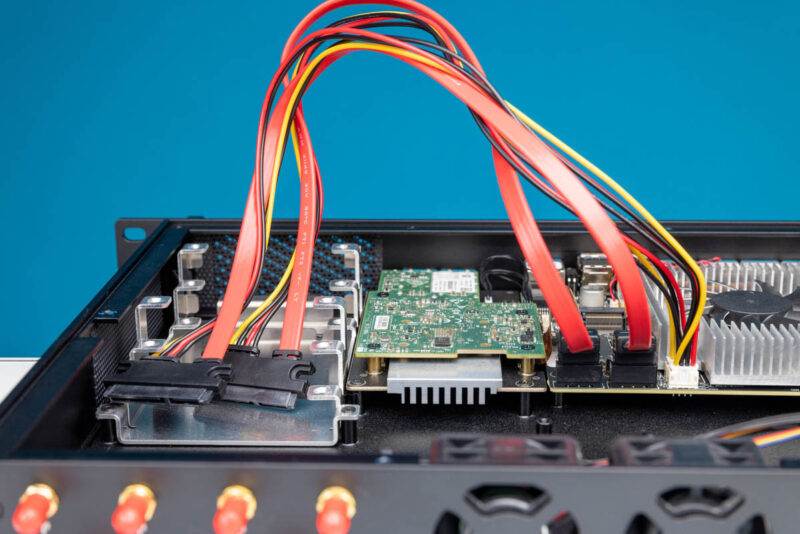
In the middle of this SATA drive functionality, there is the 25GbE NIC.
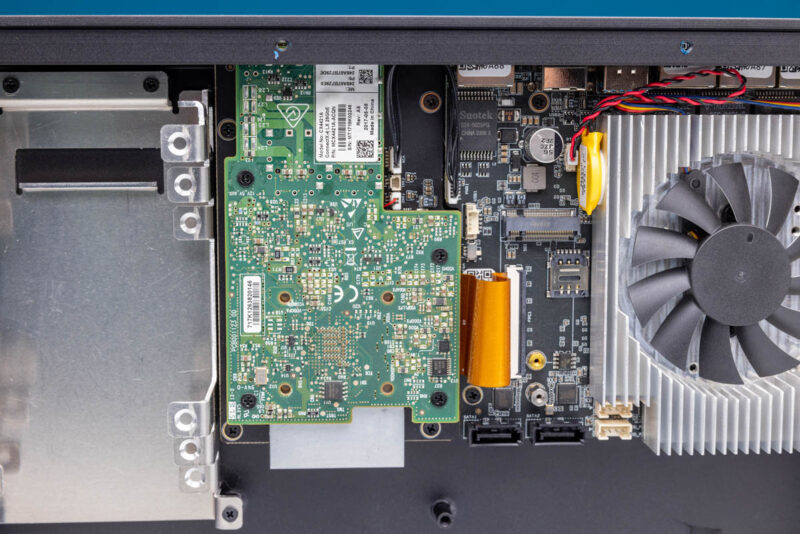
Onboard we have a Mellanox, now NVIDIA ConnectX-4 Lx. This was the standard 25GbE controller that was used in a huge number of systems. While it is not the newest 25GbE NIC, OS support is generally awesome.
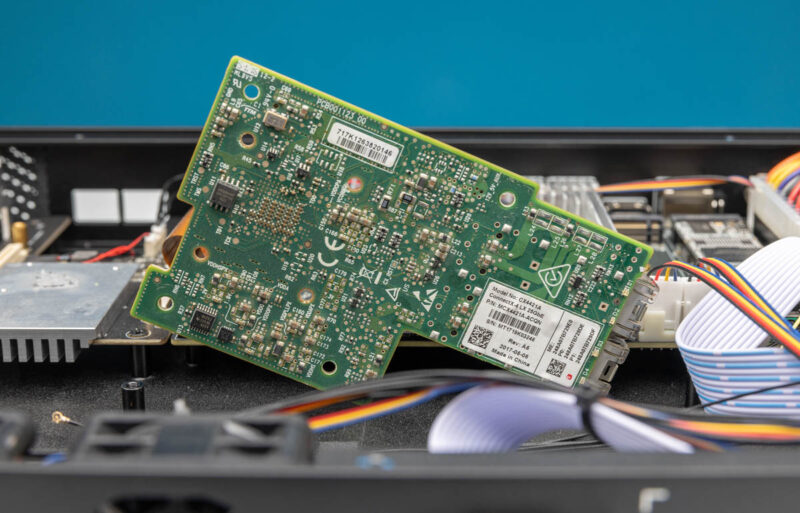
This is an OCP NIC 2.0 form factor, not a standard PCIe form factor.
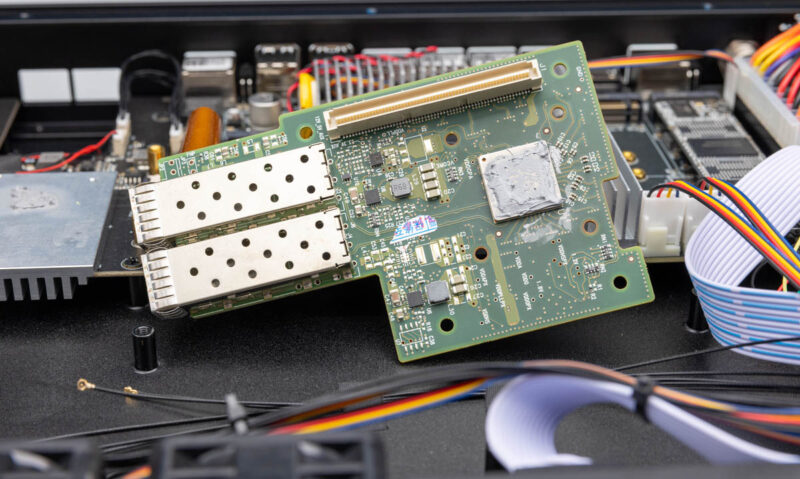
The NIC itself has a carrier frame as well as a cooling solution around it.
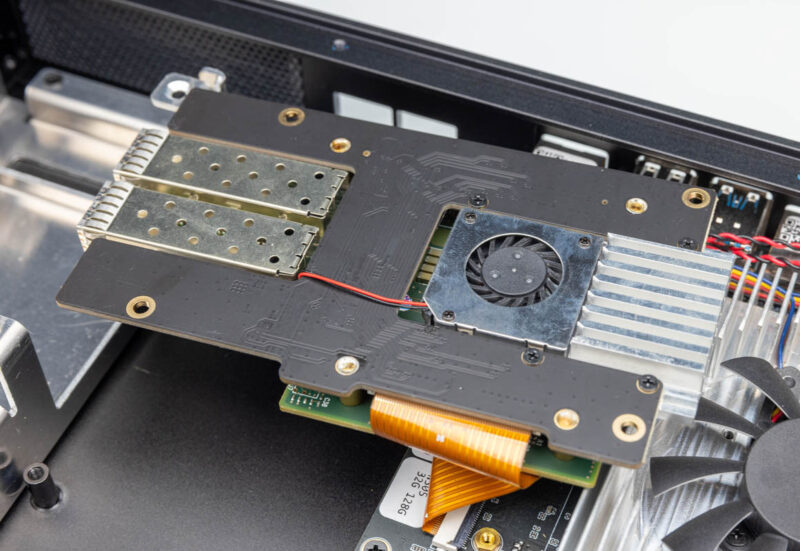
That little fan is audible, but is not the loudest fan in the system.
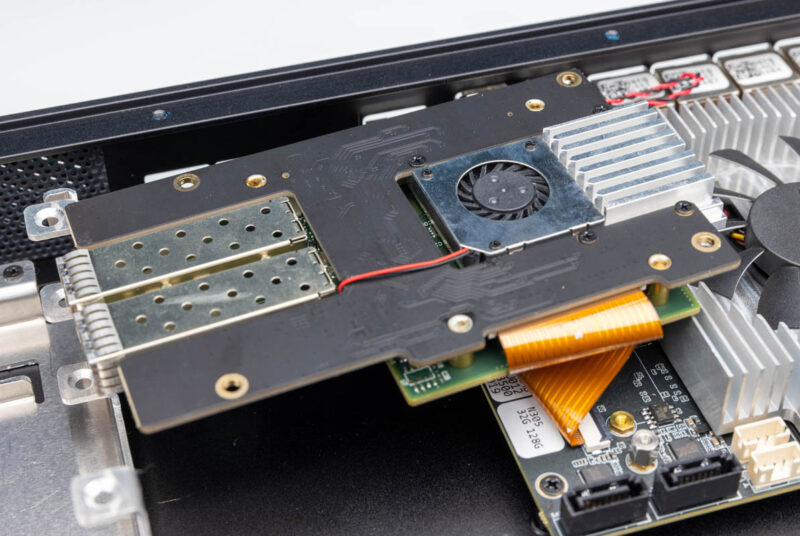
Here is a look at the carrier installed with the heatsink/ fan but the NIC was removed.
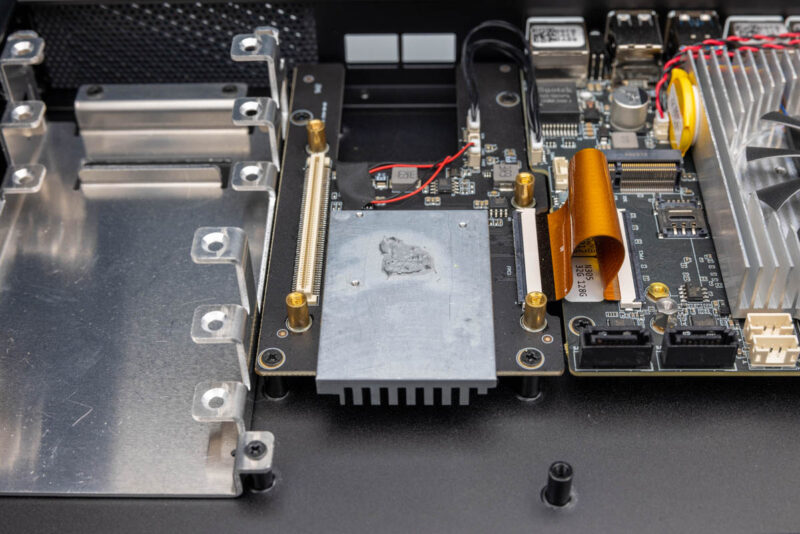
Here is another angle of that. One can see the ribbon cable connecting the OCP NIC 2.0 carrier board to the main motherboard.
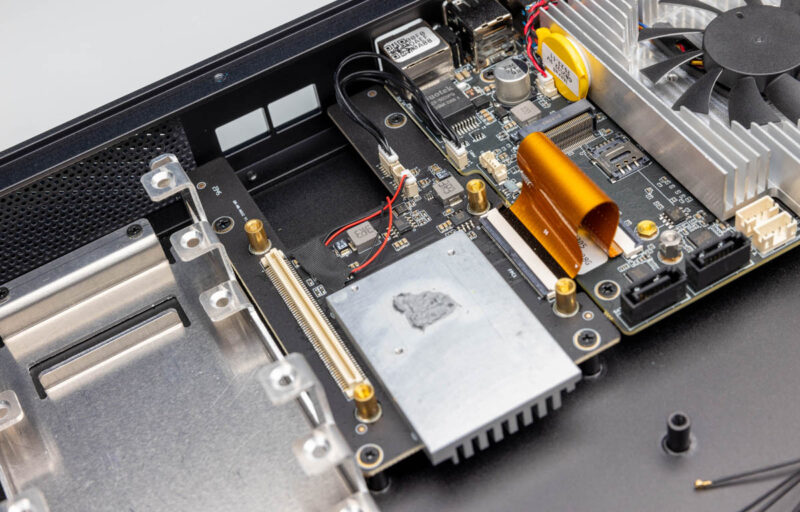
On the bottom, we can see two Intel i210-AT NICs, an Intel i226-V, ASMedia ASM1806. There is also a GL3523 USB 3 hub on the bottom. Switches and hubs are making this work.
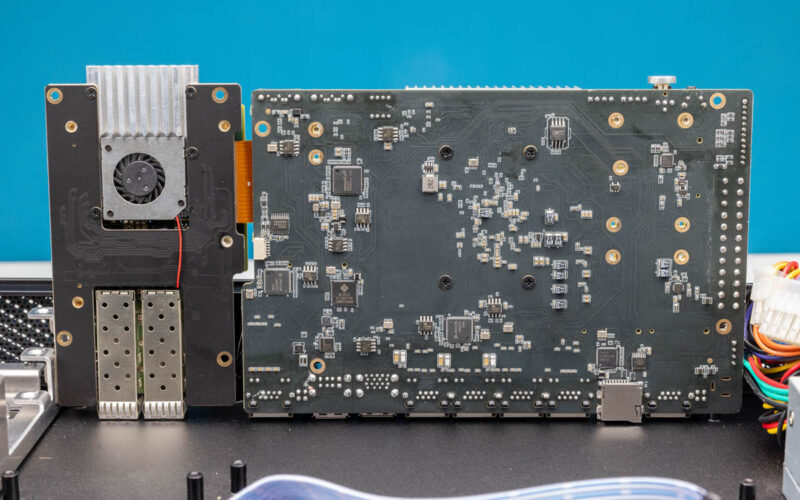
Next, let us get to the performance.

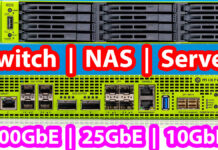
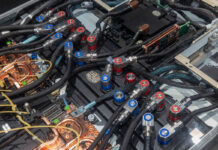
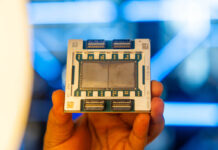
can it run fq_codel or cake or libreqos?
Great review! What firewall/OS were you running when you got 17Gbps throughput on the 24GbE SFP+ ports?
I was one of the first people to receive this one. The fan on the PSU is absolute garbage and made it impossible for me to sit next to the machine. I ordered a Noctua NF-A4x20 replacement, spliced it in. That fixed the noise issue immediately. I’m still thinking if it’s worth it (and possible) to replace it with something like a Seasonic.
Also worth mentioning that the onboard SATA ports are not really SATA, those are 2 USB-SATA adapters, which make them almost useless for any real data storage on a modern filesystem like ZFS or Btrfs.
Another quirk is that the board does NOT shut down. The CPU will and system will, but it keeps drawing around 15W when the board is “powered off”, and it screws with the SFP ports because of this, some modules could not come up without replugging them after shutdown (there is a workaround for this on the mellanox side of things). This is because the board does NOT unlatch the PS_ON# pin. Yes, this means that the PSU fan will keep spinning even when the board is “shut down”. And while we’re on the power consumption side, enabling power saving in linux for the i210/i226 NICs makes the whole system crash.
Overall I’m happy-ish with the system, made it work for me. But Gowin has this mentality of designing a new version of hardware right as the first customers get the current version, and if you have issues with it? Tough luck, you can buy the new version which is right around the corner. Caveat emptor
I prefer buying from the company that made an item I’m buying, and given a choice that’s exactly how I shop. At least then I know I’m buying the real thing. I have very little trust in Amazon.
You get these machines that are obviously network appliances and you tell us how many times they can compile the Linux kernel per hour. Yeah, I need to get a nox with a low spec CPU and a lot of fast NICs for my C++ work. It’s so obvious! Please, give these things to your network guy so he can run a proper router or firewall OS on them and do a proper network appliance review.
Any product link?
They will never achieve anything close to 25G on those interfaces. Probably the only thing those would be good for is electrical isolation using fiber transceivers.
The link for product link is https://www.gowinfanless.com/products/network-device/1u-2u-server/
For systems where we’ve seen the CPU a bunch of times before, it’s safe to say we know how it fits into the overall landscape against other chips.
It might be more informative to see its performance compared to other boxes based around the same chip, so we can see if maybe one particular box is hosing up the config, perhaps by a suboptimal memory layout, PCIe lane config, poor default BIOS settings, cooling solution, or whatever. Especially if there’s a reference Intel board (say a NUC or something, in this space?) that could presumably represent a bench mark against which the other integrators could be compared.
The headline is a 25Gb product and barely a paragraph about that. Not what was used, not how it was configured…nada.
Barely passable content for page hits. Nothing more.
Is this a first draft of a review? It does not matter to me how many kernel compiles you can do per day on a network appliance.
What Software did you run? What settings etc
Thank you for the professional review.We will keep upgrade for the next version with cost down and function on.
The article mentions: “At the same time, there is still a good reason to use Parker Ridge/ Snow Ridge Intel Atom C5000 series parts with QAT and onboard 25GbE if you want to go faster”. A link to such a product reviewed by you in this article (or even the comments here) would be tremendously helpful. Thanks!